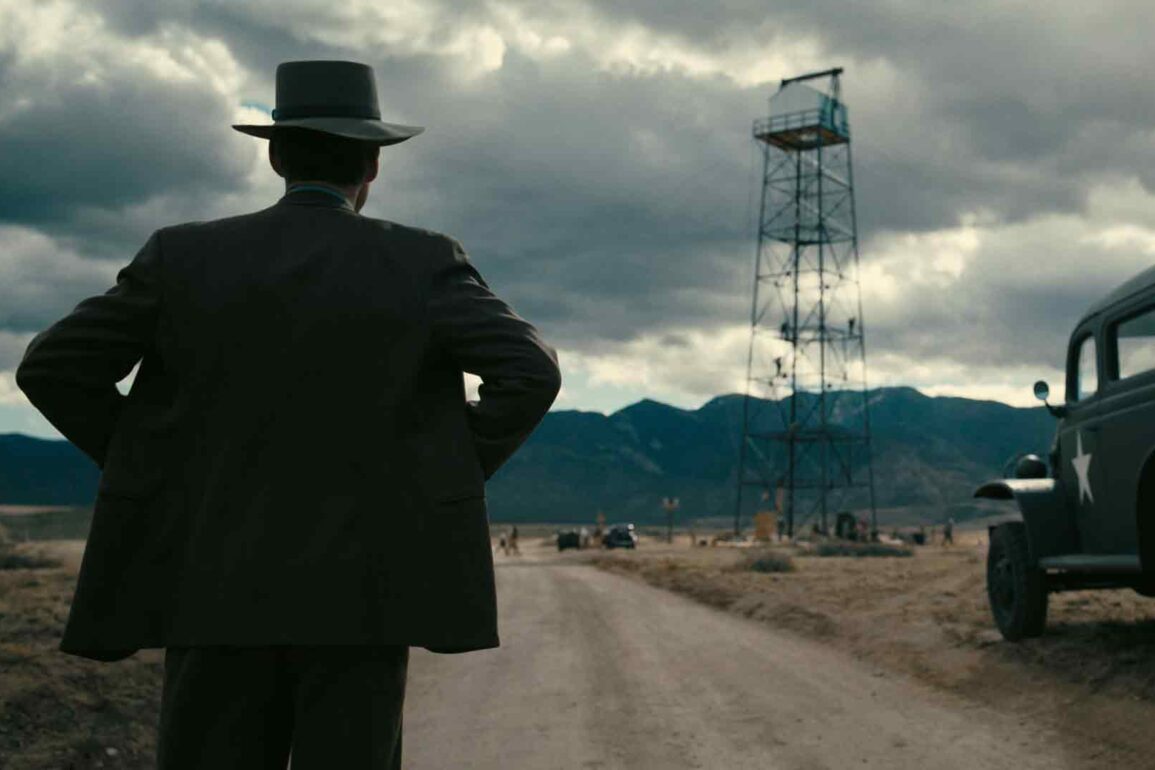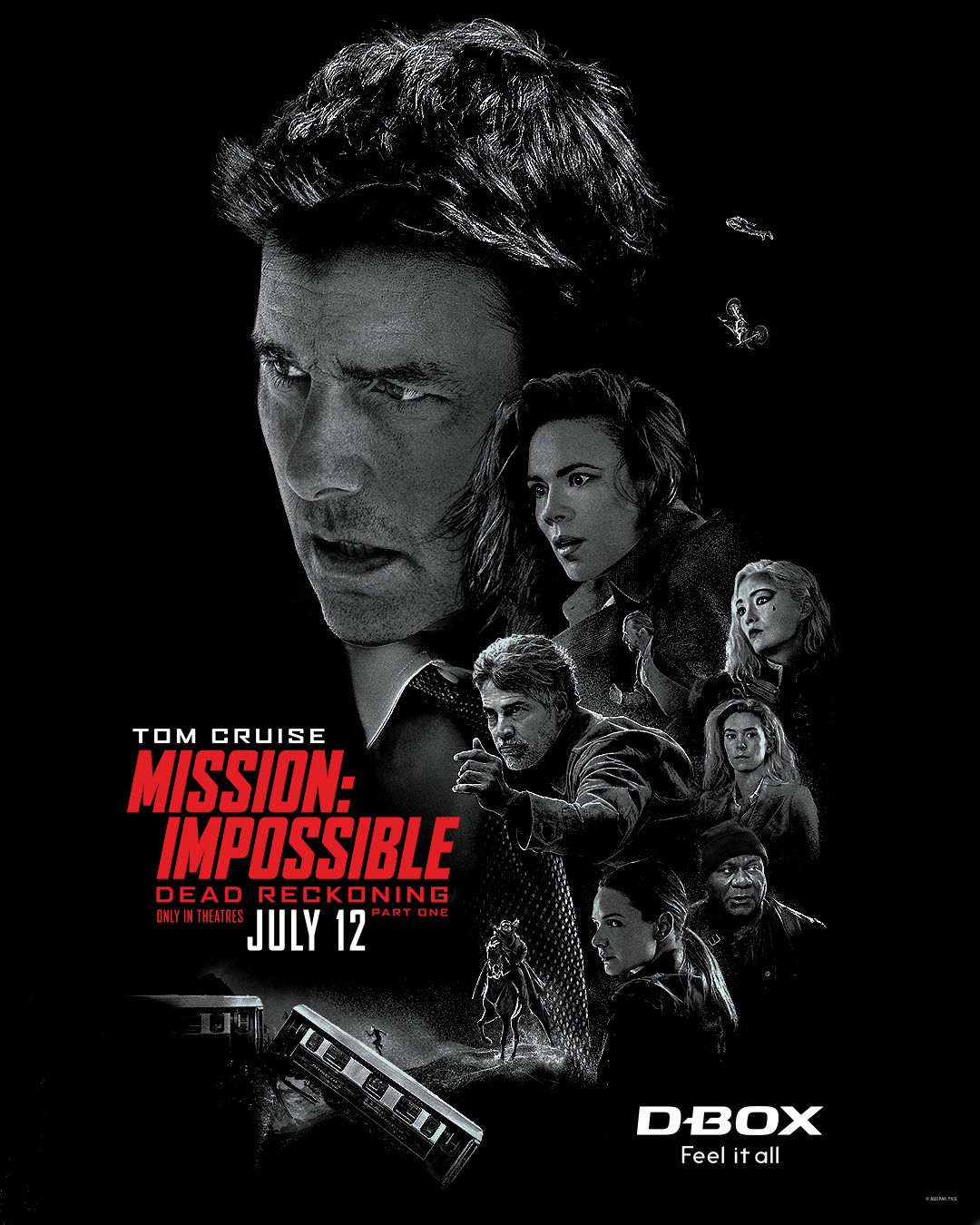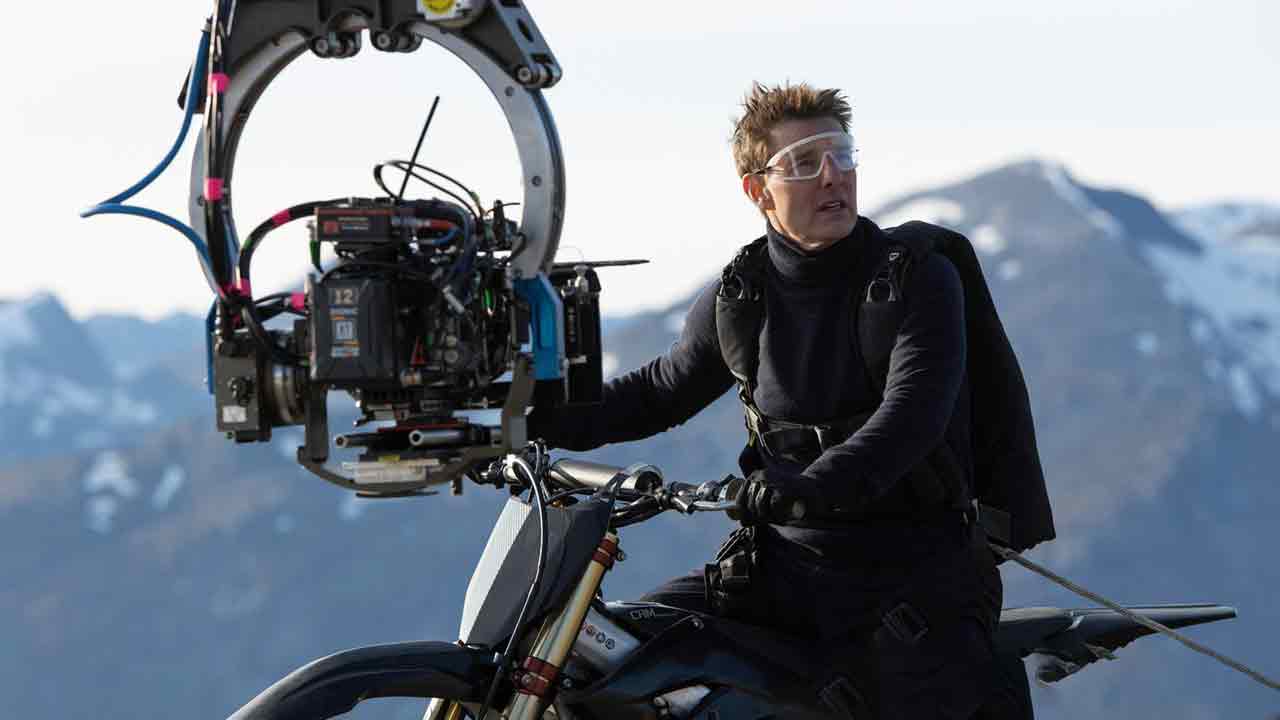Much talk has been made about Nolan’s use of CGI and VFX, or rather, the lack thereof. Many, however, were convinced that with Oppenheimer, Nolan would take the bait and need to resort to post-production to recreate the atomic blast that everyone anticipated would be in the movie: the Trinity Test. As it turns out, Nolan has once again surprised his audience by somehow managing to pull off this feat without relying on CGI. His accomplices? Visual Effects supervisor Andrew Jackson and Special Effects supervisor Scott R. Fisher.
In an exclusive feature on Total Film, the duo revealed the roles they respectively played in helping Nolan bring his vision to life, with no reliance on CGI. Jackson revealed how he usually comes in the process pretty early on and talked about how bizarre those early details that he received from Nolan sounded, when the project was being conceived and in its early stages.
I start really early with Chris, because, quite often, he wants to talk about the process and the methodology that he wants to use, really quite a long time before actual pre-production starts. It’s always better to start early for me.
It was a really interesting brief for me, because rather than challenging, it was much more exciting. Because basically, what he proposed was he wanted to make a film about nuclear physics and the event of testing a nuclear bomb, without using any CG.
Fisher on his part, isn’t new to working with Nolan. He described his job as being light thanks to the film’s biopic genre, but was informed by Nolan of a few things that they’ll need to accomplish in camera, chief of which was the Trinity Test blast. He described working with Nolan akin to old-school filmmaking, a sentiment that many of the cast echoed in the long-running interview as well. This approach changes the way SFX and VFX folks think about scenes when they’re first read to them.
It was my sixth film with Chris. Compared to a lot of the other ones we’ve done, it was definitely not as rigorous with day-to-day filming. He said, ‘There’s not as much stuff for you on this as the other one, but there’s a couple of things we do have to cover. And that was, of course, the Trinity explosion, and some prop builds, and elements of different things that we had throughout the film.
Working with Chris is kind of funny. He’s a totally different director. In modern filming, when you read a script, you think, ‘Oh, that’s going to be CG.’ But with him, you have to think, ‘This is what we’re probably going to end up doing, or some version of this.’
Both Jackson and Fisher contributed towards making that explosion a reality. On his part, Jackson helped choose the look of the explosion. To Nolan’s advantage, Jackson has a background in playing with explosions and testing out different styles and looks. He put together a slide containing several variations to help Nolan choose and finalize the kind of billowing mushroomy cloud look that Nolan was going for to simulate the aftermath of a nuke going off.
I’ve been doing this for years. I had years of little samples and things that I filmed. So I put together a single screen with little thumbnails of all of these different effects and things that I filmed that I thought were interesting. And I just played that on a big screen, and said, ‘Is there anything here that you find interesting?’
Traditional computer-generated visual effects are really off the table with [Nolan]. That’s really a last resort. Because I come from a background that’s practical, and I now work in a visual-effects capacity, I quite often bring that combination of practical effects and visual effects to a project, which is quite a useful thing.
Fisher at his end constructed large-scale miniatures of just the right size – big enough to feel gigantic and much more than regular models and miniatures, but small enough to allow the camera to capture them as closely as possible for maximizing the impact of the explosion. He also described the elements they ultimately wound up using to recreate the nuclear look that Jackson’s slide helped finalize.
It is like an old-school technique. We don’t call them miniatures, we call them big-atures. We do them as big as we possibly can, but we do reduce the scale so it’s manageable. It’s getting it closer to camera, and doing it as big as you can in the environment.
It’s mostly gasoline, propane, any of that kind of stuff [for explosions], because you get so much bang for your buck. But then, we also bring in stuff like aluminium powder and magnesium to really enhance the brightness, and give it a certain look… We did a bit of that on this, because we really wanted everyone to talk about that flash, that brightness. So we tried to replicate that as much as we could.
Nolan is definitely a stickler for doing things practically on camera. Of course, he doesn’t shy away from using CGI and computers where necesary, although he tries limiting their use to fine-tune the result captured on camera instead of recreating something entirely from scratch. He clarifies the fine line between VFX (“things you do in post-production”) and SFX (“things you actually do on the floor”) and talks his rationale for going practical with the explosions here and what he aimed to achieve with the effects:
Yes, we’ve got to represent the Trinity test, but we also have to represent these images, these things in Oppenheimer’s head; his ability to look into matter, and see and feel energy there. The most obvious thing to do would be to do them all with computer graphics. But I knew that that was not going to achieve the sort of tactile, ragged, real nature of what I wanted. And so the goal was – and in the end, we have achieved it – the goal was to have everything that appears in the film be photographed. And have the computer used for what it’s best for, which is compositing, and putting ideas together; taking out things you don’t want; putting layers of things together.
While the end result is something we’ll get a chance to witness only once Oppenheimer has released in theaters on July 21, 2023, we can get a sense of some of the scale and bits of the explosion from the trailers. Particularly interesting is Nolan’s desire to use the explosions and capture the reactions inside to highlight Oppenheimer’s perception of the explosion. This fits perfectly with Nolan’s own revelation of Oppenheimer being a subjective experience, written and viewed from the point-of-view of its central character.




